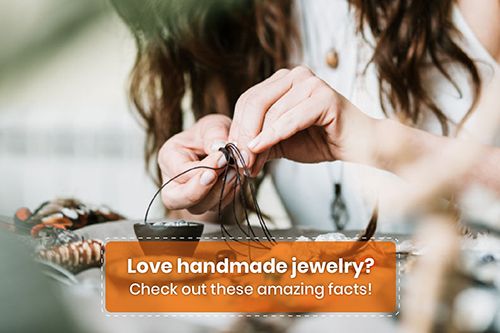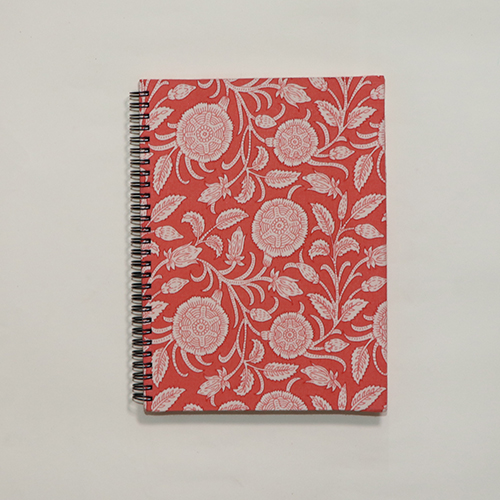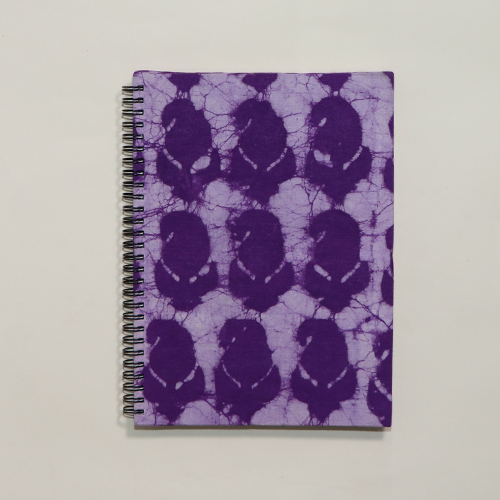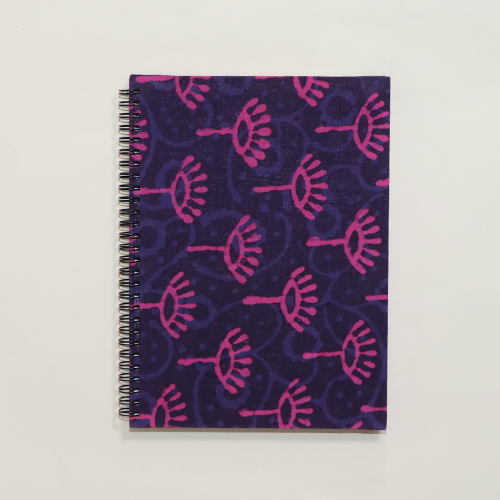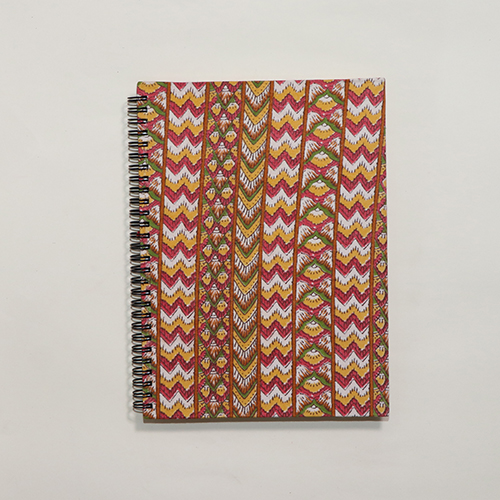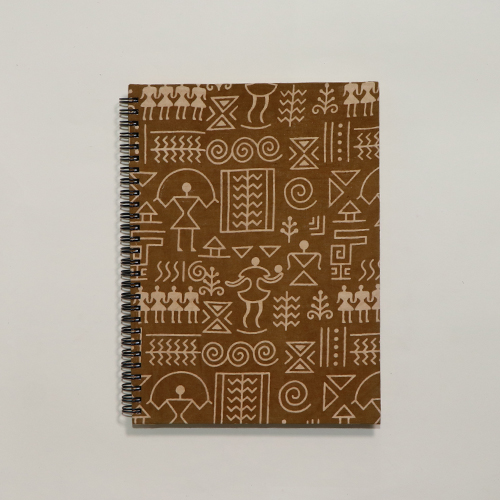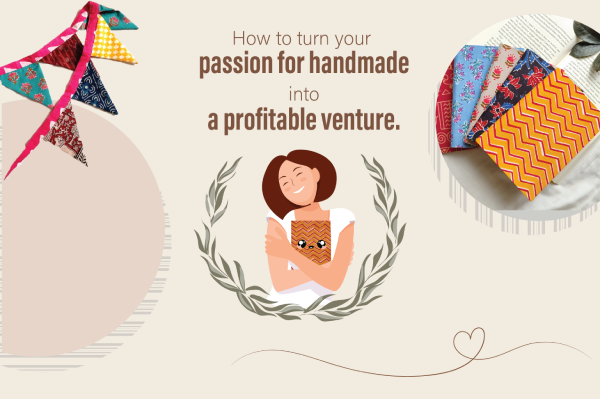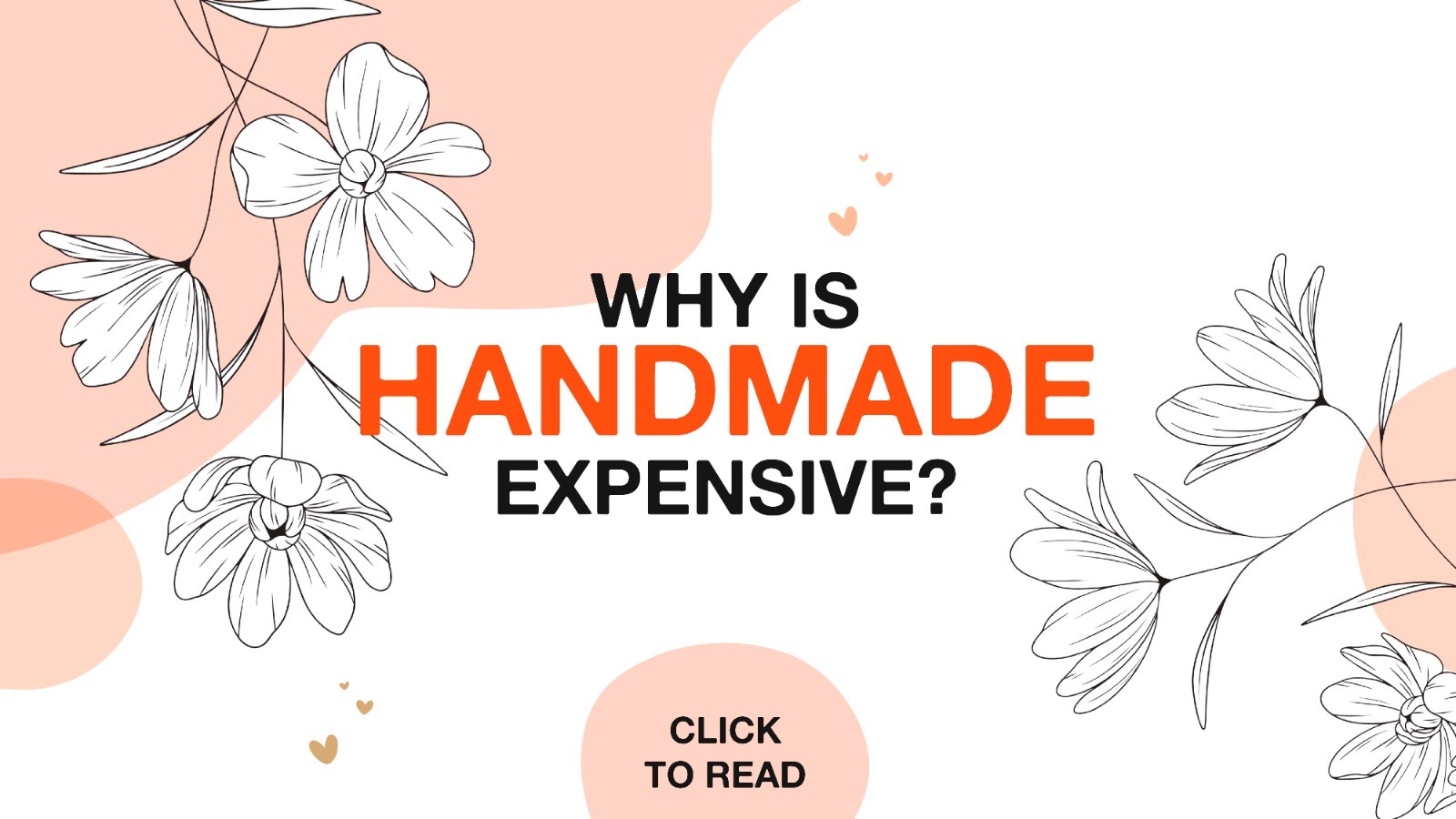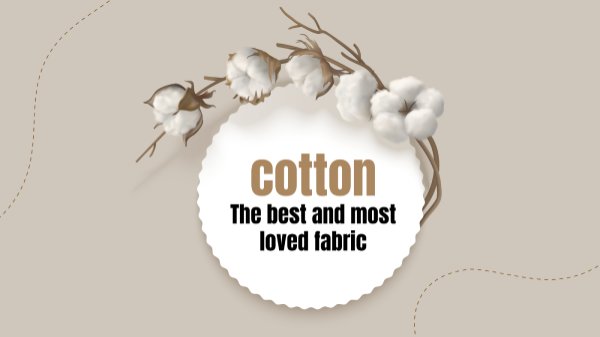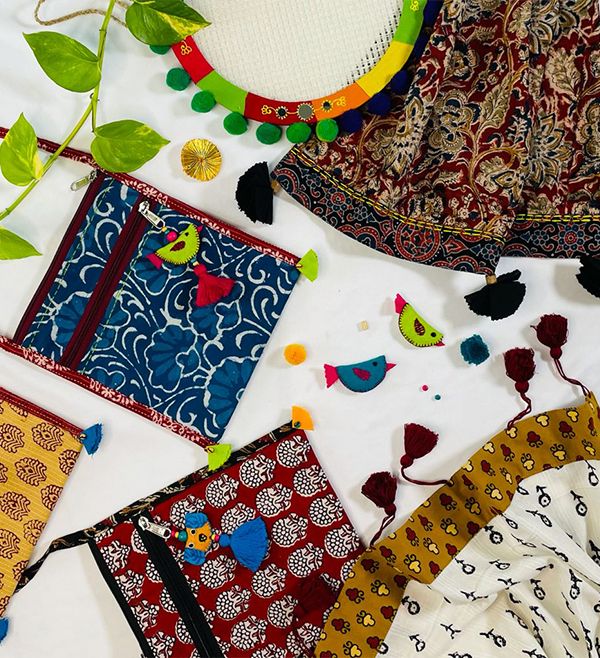What makes jewelry so special? We love to adore our natural beauty with things that elevate their charm. Jewelry has stayed for thousands of years and more. It still is as valued and cherished all over the world. The variety that jewelry has gathered over the centuries is astonishing. Handmade jewelry however, is unique and holds a special place. What makes it so loved? The popularity and value of handmade jewelry is increasing, as more people have become aware and respect the fact that, it is not just an ordinary art.
Let understand the concept of handmade first. Well, we know the name is self-explanatory. Jewelry is gathered and assembled by hand, and not mass-produced with the help of machines. Every piece is designed, weaved, carved, soldered, and sewn together by human hands. Even though there may be tool-involved processes, majority of the craft is made by skilled artists. Many more factors highlight the importance and love attached with handmade.
- Handmade jewelry requires a great deal of time investment, which makes it a classic. One single piece may take days and sometimes, even months to complete. Right from curating a unique design, to paying attention to fine details, a lot of effort is required to assemble handmade ornaments.
- Artists use their talent and imagination, to design every piece, and carefully handpick the raw materials required for the design. This ensures that every component has stellar quality and come from trusted sources.
- Since handmade is such an intricate process involving undivided attention and skill from the maker, right from choosing fine raw material to making a spectacular design, with precise details, and satisfaction in the finished products, handmade assures a high and unmatched quality. Unlike mass produced jewelry, handmade sets a timeless class and standard, and not a current trend.
- The biggest issue with machine made jewelry is the sheer quantity of it, which makes it available to all. You are most likely to see it worn by many people. Handmade however, is not made in bulk. Sometimes artists will make only one piece of each design, which makes it a rare treasure to flaunt. Many artists make one of a kind jewelry, in their entire life. In addition, the owner becomes the valued treasurer of this signature craft.
Handmade jewelry is unique and limited, which increases its value manifold. - Each time you buy a piece of handmade jewelry, you are not only making a purchase, but also making your contribution to a local skilled artist. Making jewelry is an inborn talent and gift, and most of the times the skills, signature style,and craftsmanship are passed on through generations. Artists who make it are rare, and buying their art, gives them sustainable income, supports their talent, fuels economy,and addsvalue and recognition to their efforts.
- Along with the fabrics, beads, stones, thread and other raw material, there is deep emotion attached to making things by hand with love. It is made passionately by people who love what they do, who craft it precisely with great dedication. It radiates the value of good artisanship, and delivers more than just a piece of art; it delivers satisfaction, and the pride of owing a unique piece of craft.
So, how did it first become not just an accessory but also an invaluable piece of jewelry? We know even cave dwellers used shells and bones to make jewelry. Why don’t we find out more? Let us dig deep in history, and unearth the treasure of everything about handmade jewelry today.
Prehistoric times
The earliest jewelry recorded, was made some 115,000 years ago, by Neanderthals, who lived in parts of now Europe. They used perforated seashellsto make a string of beads. This jewelry was found in a cave called ‘Cueva de los Aviones’, located on the Southeast coast of Spain. There is also evidence of crude bracelets and necklaces, made from animal bone, teeth, tusks and berries, used by the Cro- Magnons.In Africa, jewelry made of perforated sea snails dating 75,000 years old was found in ‘Blombos’ cave. Ostrich eggshells were used to make beads and jewelry, in Kenya, 40,000 years ago. The first documentation of making metal jewelryby hand is around 7000 years ago, when copper was used to make decorative ornaments. More detailed and prominent jewelry dates back to ancient Egypt, some 3000 to 5000 years ago. They used semi-precious stones, gold, and colored glass to make ornaments. The use of colours was also symbolic to many Egyptians, especially the Pharaohs, who mostly wore this precious jewelry. It reflected religion, power, wealth, spirituality, and prosperity. Along with the Egyptians, the Greeks too loved their jewelry and often used gems and gold to adorn themselves. Their technique however, differed from the Egyptians. With time, and during the middle ages, for the Romans, jewelry was a status symbol, worn by royalties and the rich. It was also used for trading as barter.
Evolved with time…
America and China too gradually started using jewelry as a sign of status and rank. Jewelry was no longer made only from raw material that was available or found easily, but rare precious material, like metal, rare stones, pearls, etc., which was hard to find and mine.Across many ancient civilizations like Mayan, Africa, Egypt, Chinese, India, and Africa, archaeologists have found stunning pieces of jewelry with complex craftsman designs and skills, including beads, precious stones, shells, and gemstones.
Indian Jewelry
Indian jewelry is a strong expression of the culture and ideologies, which encompass the nation’s rich heritage. It is more than just an ornament. In India, the history of handmade jewelry dates 5000 years back, to the Indus Valley Civilization. Early evidences suggest the use of cylindrical carnelian Harappan style beads in Mehrgarh, Nausharo, Nagwada, Kunal, and other regions of Harappa. It is believed that Harappan artists were excellent bead makers and experts in the technique of sharpening and perforating soft stones, like lapis lazuli, steatite, agate, jasper, turquoise, and carnelian. Many beads were found in Mohenjo-Daro excavation site, which were used to make ornaments.
The Indus Valley Civilization also used gold and silver to make various types of jewelry, like bracelets anklets, necklace, earrings, etc. According to evidence of jewelry found, it can be said that the people of this civilization had a highly developed aesthetic sense, and had extremely sophisticated taste for jewelry, along with fine artistic and engineering skills. A few ornaments from the excavation are displayed at the National Museum, in New Delhi, India. Another interesting factis that the designs and trends are still very popular in India and are followed till date. Two fine examples of this, are the gold sheet forehead ornamental shape, which is still worn by many Indian women. The ‘borla’ popularly worn by Rajasthani women, is also a design continued and inspired from ancient sculptures.
The historic sculptures of Bharut, Sanchi and Amravati, adore intricate jewelry carvings, for both men and women. The paintings at Ajanta caves portray ornaments worn by king and the common people too. Many temple sculptures in India, adore the rich jewelry trends and design of that particular period. These designs were initially crafted only for adorning the idol or temple sculptures however, slowly the dancers who portrayed the religious and devotional renditions through their performances in these temples, started to wear jewelry that reflected the style and designs of the sculptures. With traditional dance forms like Bharatnatyam, temple designs soon became very popular, and still are a rich and heritage jewelry trend all over India.
Spiritiual and Religious symbolism
Indian history of jewelry has symbolic, spiritual and religious importance too. Jewelry has been mentioned in the religious texts, and records state of the Indian handmade jewelry being adored by many foreign rulers and explorers. Ancient visitors from Greece and Portugal were in awe of the beauty if Indian jewels and would marvel at the elaborate treasure of Indian jewelry. Mentioned in the chronicles of ‘Paes’ – a Portuguese traveller, is the description of the dazzling and beautiful jewelry wornby people in ‘Vijayanagar’ empire.
Indian history provides evidences of the unmatched significance, and symbolism of jewelry and jewels, in various literature, and writings with myths, legends, chronicles and stories.According to the ancient holy scripture of Rigveda, the gods of the universe, Rudra and Agni, possess seven treasures. ‘Maniratna’ also called the serpent stone, is worn to ward off any evil eye, and protect the wearer. The ‘navratna’, or nine gems, are symbolic in astrology, with each stone relating to the (then) nine planets in our solar system. It is believed to provide protection and energy, when worn in a specific order. Tulsi beads, ‘Rudraksha’, and sandal wood beads are used in jewelryin many cultures throughout India. The ancient scriptures of Mahabharata and Ramayana, are significant and symbolic to jewelry too, where the details of the jewelry of Gods and Goddesses are mentioned. A 19 centuries old text, called -Artha shastra, speaks of the skills and intricate arts of the artisans and jewelers of Yore. The ancient Tamil classic – Silappadikaram, mentions the society dealing in gold, precious stones and pearls.
The Revolution of Centuries
The Mauryan period was also significant to the use of elaborate jewelry. It is observed that both men and women, adorned exquisite jewelry. Most females wore beautiful necklaces and hip girdles, made in beads and and decorative clasps. In the sculptures found in ‘Bharhut’, females and males both adored jewelry. Men however, did not wear jewelry on their fore heads, hands and anklets. In the Maurya and Sunga periods, jewelry underwent a significant upgrade. Usage of precious refined stones that reflected simplicity slowly started started emerging, while the usage of most precious stones, like agates, cornelians, pearls, amethysts, corals and metals like gold and silver, continued to its every extent.
With the rise of Mughal Empire, began the beautiful journey of jewelry design and style that was intricate, and a fusion of Indian styles and central Asian influences. They inspired the inheritance of traditional designs, and introduced innovative techniques in jewelry making. The style was more inclusive of natural patterns, floral motifs and geometrical shapes, which were subtly included in traditional designs. The famous style of ‘Kundan’ jewelry was also developed during this period. Precious stones were set in pure gold, in perfect finish and beautiful designs. A lot of precious gems were used widely, during the Mughal time, where these stones not only provided ornamental aesthetic and opulence, but were also symbolic to protection as ‘talismans’. The most popular gem was the ‘emerald’ loved by emperors, who called them – ‘tears of the moon’
More ornamentation, exquisite and elegant designs, were seen in these times, and this created a never seen before extravagance and grandeur in the treasure of Indian handmade jewelry, which is still adored, cherished and in demand till date.
Fun Fact : The Taj Mahal emerald is one of the most treasured stones in India. It is a hexagon shape and had beautiful intricate carvings that resemble the motifs on the Taj Mahal.
We now know that the Mughals introduced the ‘kundan’ jewelry technique, however, very soon, it was the artisans and craftsmen of western India, in Gujarat and Rajasthan, that mastered it, to create breathless designs in fine technique.Thejewelry they made was time consuming but the resulting piece, was breathtaking, grand and suited for the royals!
During the 19th and 20th centuries, Indian jewelry was slowly absorbing western styles and trends, due to the colonial rule; infusing them in traditional patterns to make stunning masterpieces that evolved with more grace, innovation and beauty. The famous European jewelry brand, Cartier, was designing intricate pieces for the Indian royalties. They used traditional designs, precious stones, all assembled with fine artisanship in Paris! Soon, the patterns and trends of the west, like Cartier’s famous – ‘tutti-frutti’ style, made way to blend in traditional Indian designs.
The beginning of mass produced jewelry
Until recent times all jewelry was made exquisitely and by hand. Artisans had their own unique design and style of making signature ornaments. After the middle ages, artisans passed on the legacy of handcrafting jewels, to their apprentices, who then added their own unique style to them. Handmade jewelry thus evolved, through generations and slowly embraced new materials, designs and techniques. The Victorian era, however, saw a rise in the popularity of jewelry and introduced many ways to make it available to commoners. Jewelry was being mass-produced with innovative techniques. Rare and precious stones and metals, were easily duplicated and used in designs. It was easily available, but the rarity and value were smudged, with expansion and mechanization. There were two segments now, the handmade and the mass produced.
Jewelry in India now, is a valuable part of tradition, adornment, beauty, culture and symbolism. Indian women love their jewelry, and it is rare to find an Indian household without a legacy of jewelry. It sure is more than just a piece of accessory. It is an investment, insurance, a treasure passed through generations, memory, and the best gift!
Over all, handcrafted jewelry is the mother of this beautiful art and adornment accessory. It is very popular and artists are finding new and unique ways to introduce the tradition to modern art. Making eco-friendly jewelry, is a viable trend, and is gaining popularity. All across the globe, people are now more aware and conscious. They want their jewelry to have a story and purpose, rather than just being an accessory. Handmade is slowly gaining value again. It has a rich history, it has the love and emotion of centuries, and memories of a long time, that are still fresh, and live on with the beautiful legacy of handmade!
